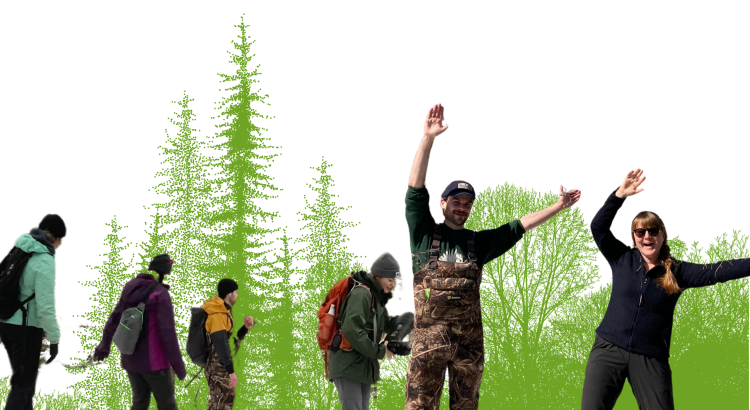Welcome to the heart of being a Guardian for Nature, where the essence of stewardship intertwines with the call to become custodians of Prince Edward Island’s natural heritage. In the realm of conservation, stewardship is the cornerstone, and being a Guardian for Nature is the embodiment of this duty.
At Island Nature Trust, stewardship is not merely a concept; it’s a way of life—a commitment to safeguarding our Island’s ecological heritage for generations to come. As stewards of over 11,000 acres of land across PEI, we take on the responsibility of monitoring, maintaining, and restoring these treasured ecosystems in perpetuity.
Stewardship goes hand in hand with being a Guardian for Nature. It’s about actively engaging with the land, immersing ourselves in its patterns, and standing as protectors against threats both seen and unseen. In essence, stewardship is the tangible expression of our role as Guardians—a pledge to uphold the integrity of our natural world. For in the act of stewardship lies the true essence of being a Guardian for Nature.
Understanding the Role of The Stewardship Team
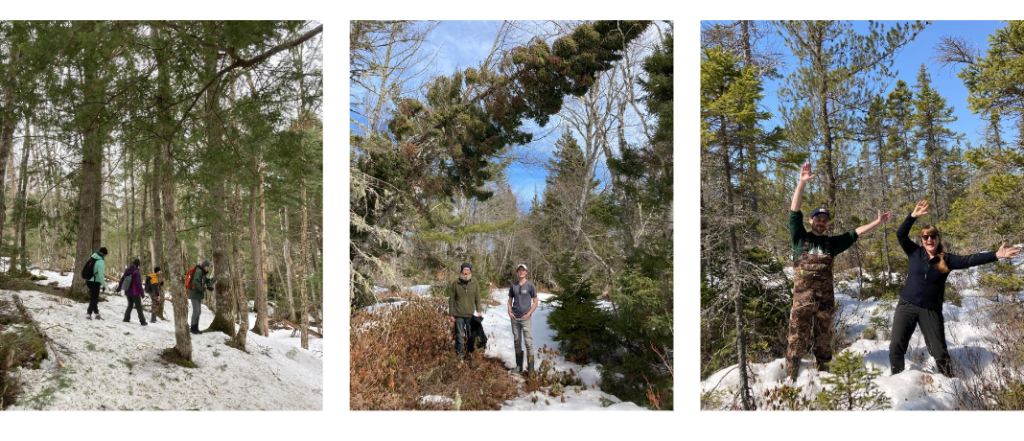
What Does “Stewardship” Mean?
Environmental stewardship encompasses the sustainable use of resources and the protection and restoration of the environment to enhance ecosystem structure and function. Once Island Nature Trust acquires a property, we become responsible for monitoring and maintaining it in perpetuity to sustain and enhance the ecosystems we are protecting.
What Does Monitoring Entail?
INT staff, as well as a group of dedicated volunteers known as Conservation Guardians, are responsible for monitoring each Natural Area at least once per year. During a monitoring visit, the main goal for staff and Guardians is to look for changes to the natural environment from a variety of sources, including natural disturbances (i.e., windfall, signs of plant disease), signs of human use (i.e., motorized vehicle tracks, footprints, evidence of camping), dumping, and boundary incursions.




Secondarily, staff and Guardians record information about species occurrences, paying particular attention to document invasive species and species-at-risk. INT staff use the information received during monitoring visits to inform future work on each Natural Area. Whenever possible, INT prefers to passively manage Natural Areas, allowing nature to run its course; however, there are instances where interventions are required.
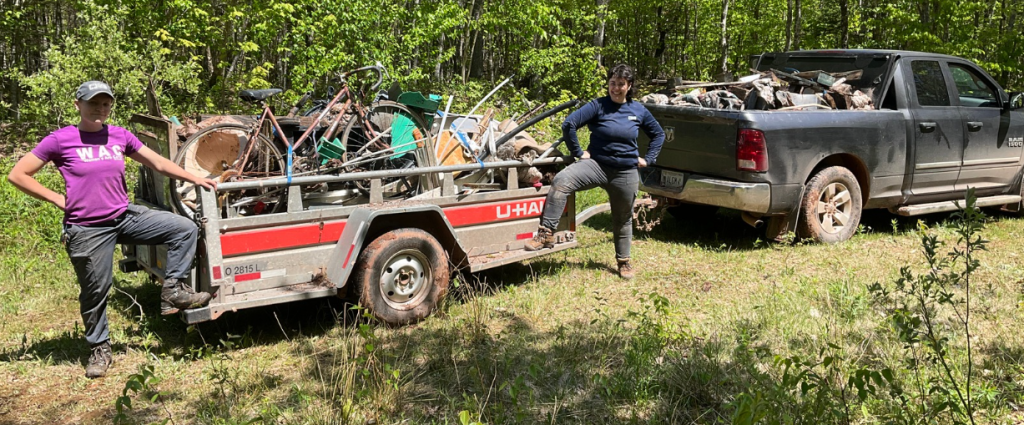
What Types of Interventions are Needed?
Active work to mitigate risks to the Natural Area and enhance ecosystems include cleaning up new and existing dumpsites, controlling access points to block motor vehicles access, infrastructure removal, native species planting, targeted invasive species management, and ecological forestry interventions.
Case Study: Removal of Abandoned Vehicles
The Stewardship team is responsible for weighing the pros and cons of engaging in active work on a case-by-case basis. Some of our properties have a history of previous forestry or agricultural activities and therefore roads were once present on the site. Consequently, our team occasionally finds abandoned vehicles on our properties. It is up to the Stewardship team to assess the viability of removing the vehicles by considering the proximity to a current road, age of the forest, how long the vehicle may have already been there, and availability of funding.
In the summer 2023, two abandoned vehicle sites were discovered in the middle of 30 – 50-year-old established forests. In these cases, removing the abandoned vehicles likely will cause more environmental harm than leaving them in place.

Other Stewardship Work
Our Stewardship team is also engaged in other activities, including helping to administer the Conservation Guardian program, maintaining INT’s footpath systems, and erecting directional and educational signage. We also participate in Island-wide conservation planning, support initiatives by Indigenous-led organizations, and collaborate on projects with other conservation organizations, including watershed groups, the PEI Invasive Species Council, and the Macphail Woods Ecological Forestry Project.
Become a Conservation Guardian
Help INT by monitoring an assigned Natural Area and submitting a report at least once per year. The program also offers opportunities to take part in value-added activities, including interpretive walks, workshops, and hands-on activities.
Other Ways to Support the Stewardship Team
- Consider participating in our Seed Tree Sponsorship program.
- Donate directly to INT and specify that you would like your donation to support the Stewardship Team.

Thank you to the PEI Wildlife Conservation Fund for supporting the Guardian programs.
Be A Champion For Nature
We all share a unique connection to nature, and our supporters express it in diverse ways.
They are our Champions of Nature, coming from various backgrounds – from hands-on volunteers to
digital advocates, creative fundraisers, and generous donors.
What kind of Champion for Nature are you?
Get in touch
Connect with our team
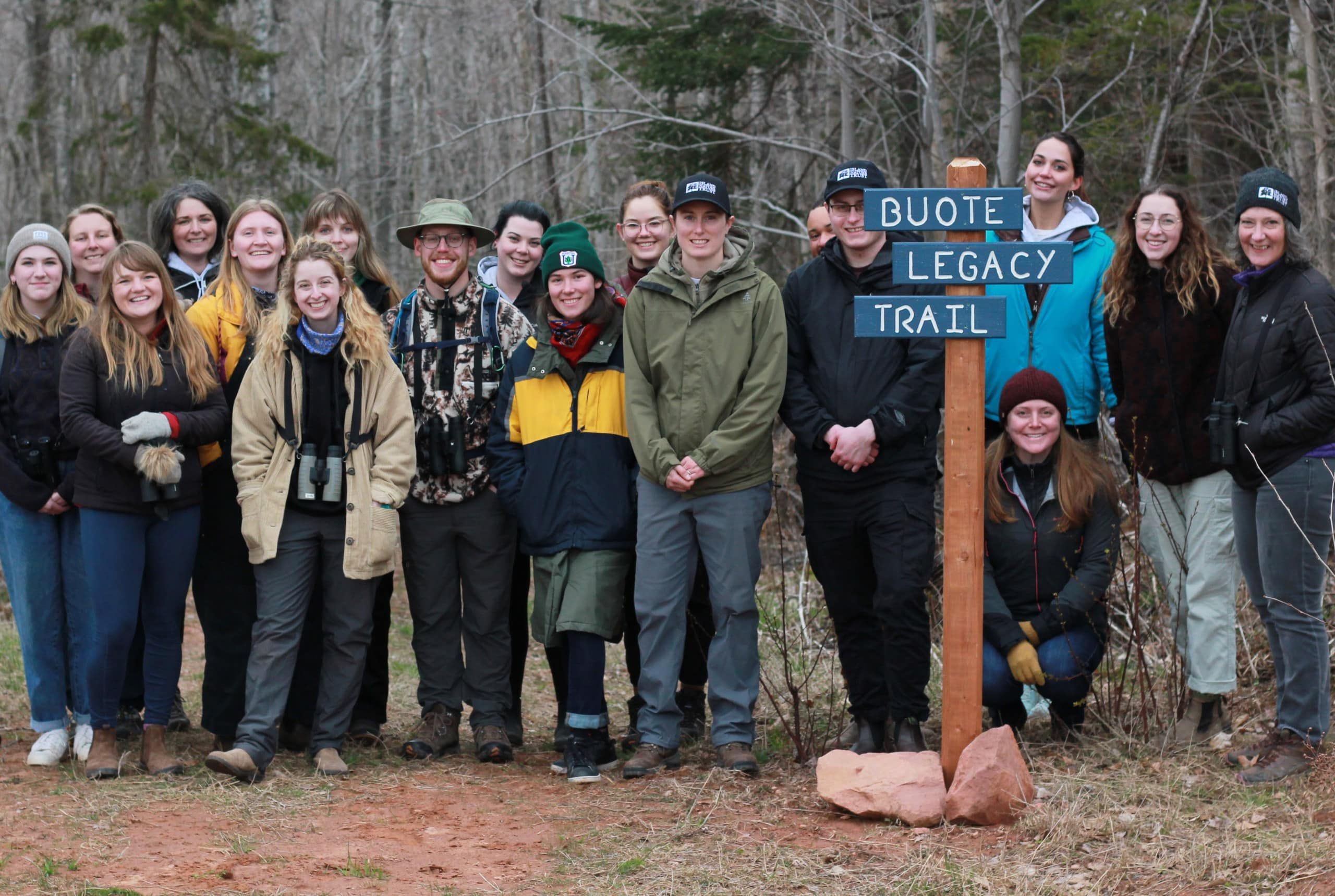
Sign up
To Our
Newsletter
Be the first to know about
future events, news and
campaigns.
Follow Us
#givingbacktonature
